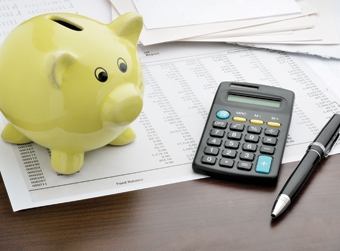Why would anyone want to start up their own business? Within the first eighteen months, over half of small businesses fail.
Still the people who have the guts (or are crazy enough) to start their own businesses find ways to prevail. Some just need the freedom. Others believe that they can do it better than the next guy. And most have supreme confidence in their abilities, believing that they can do anything that they set their minds to.
My hats off to anyone who goes his or her own way. Unfortunately the statistics indicate that, even with a great business idea along with a positive mental attitude and core competency in the technology of the business, success is not assured.
Poor planning and insufficient funding is a major reason that new businesses fail. As Napoleon rightfully observed, the battle is won or lost before the first shot is ever fired.
Napoleon knew the importance of good planning. And based on what he said, you’d think that calculating start-up costs and formulating a business plan is a simple, straightforward process. Well, it’s not as easy as it looks.
When it comes to a business plan, all of your theorizing may not survive reality once you’re open for business.
That doesn’t mean that you shouldn’t do any planning. Instead once you’re open for business, your plan will need to change to meet the requirements of the market.
As you’re compiling your start-up costs, write down everything that you think you’ll need. You’ll probably rack your brain and come up with a pretty comprehensive list, but no matter how hard you try, the fickle finger of fate will throw you a curve. All of a sudden, you’ll encounter trials, tribulations, and expenses that you never imagined.
Here are some areas it should cover:
Start-up Expenses. In the start-up phase of your business, you’re allowed to write off a portion of your start-up expenses. That’s why you’ll need to carefully record all these expenses: legal fees, accounting costs, state incorporation fees, business permits, insurance, initial payroll expense, rent, sales and marketing expenses (presentation materials, logo design, Web site development, brochures, business cards, etc.), and office supplies.
Assets. This includes: office equipment (computers, copiers, etc.), office furniture, shop equipment, and inventory.
Financing. How much cash do you have on hand? How much money do you have in the bank? What about investments (what you or others put into the business)? Or loans? This information will also provide you with a good idea about how much cash you will need to get your business started.
Your cash balance consists of all the money that you’ve raised as an investment along with all of the money that you’ve borrowed minus all of your start-up expenses and your assets.
“The major reasons why most businesses fail are an improper understanding of cash flow, as well as mismanagement and inadequate planning of working capital,” says Tim Reimer, controller for Nekoosa Holdings, Inc. “Covering fixed costs is the easy part of the financial equation.
“But planning inventory purchases and expected inventory turns, along with expected payment terms, are critical to the success of a fledgling business. No one wants their money tied up in inventory or receivables for too long.”
Carefully track all of the starting expenses that you incur prior to opening day and segregate them from any of the shop and administrative expenses incurred after you open the doors. Don’t record the start-up costs as expenses on your profit and loss (income) statement.
Also you can’t charge any of your assets as expenses. They’re two different animals. Expenses you can write off (deduct from taxable income). Assets are not deductible but can be depreciable.
The rules covering how much you can deduct and when you can take the deduction varies depending on the total amount of start-up costs. For businesses with start-up costs of $50,000 or less, the first-year deduction can be as much as $5,000. Because IRS rules can be a little tricky (and change from year to year), consult with your accountant or tax advisor regarding any start-up deductions.
“Fixed assets, such as your shop equipment, aren’t regarded as start-up expenses but can be written off through depreciation,” says Reimer. “The depreciable tax value of a particular asset will be treated and depreciated differently depending on the expected life of the asset.”
In addition to calculating the one-time start-up costs, also list the recurring fixed monthly expenses. Fixed costs are exactly what you may think they sound like: They don’t change!
Fixed costs for your shop might include: employee wages, rent, utilities (gas, electric, water, sewer, etc.), shipping costs, supplies, and phone expense.
Until you get cash coming in from sales, the first few months will be tough, so you’d better have enough in your checking to cover those fixed expenses.
Understanding your start-up costs—as well as your fixed monthly expenses—is also critical in determining your break-even point and developing your sales forecast.
With thorough planning, you’ll improve your odds of success as you pursue your new business endeavor.
By Jim Hingst
Photo: Shutterstock











